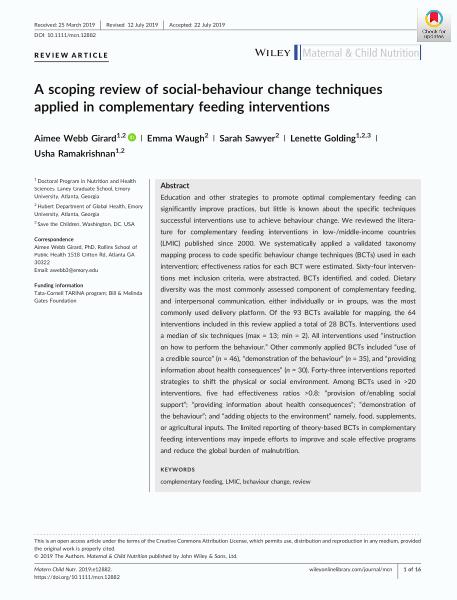A scoping review of social‐behaviour change techniques applied in complementary feeding interventions
Abstract
Education and other strategies to promote optimal complementary feeding can significantly improve practices, but little is known about the specific techniques successful interventions use to achieve behaviour change. We reviewed the literature for complementary feeding interventions in low‐/middle‐income countries (LMIC) published since 2000. We systematically applied a validated taxonomy mapping process to code specific behaviour change techniques (BCTs) used in each intervention; effectiveness ratios for each BCT were estimated. Sixty‐four interventions met inclusion criteria, were abstracted, BCTs identified, and coded. Dietary diversity was the most commonly assessed component of complementary feeding, and interpersonal communication, either individually or in groups, was the most commonly used delivery platform. Of the 93 BCTs available for mapping, the 64 interventions included in this review applied a total of 28 BCTs. Interventions used a median of six techniques (max = 13; min = 2). All interventions used “instruction on how to perform the behaviour.” Other commonly applied BCTs included “use of a credible source” (n = 46), “demonstration of the behaviour” (n = 35), and “providing information about health consequences” (n = 30). Forty‐three interventions reported strategies to shift the physical or social environment. Among BCTs used in >20 interventions, five had effectiveness ratios >0.8: “provision of/enabling social support”; “providing information about health consequences”; “demonstration of the behaviour”; and “adding objects to the environment” namely, food, supplements, or agricultural inputs. The limited reporting of theory‐based BCTs in complementary feeding interventions may impede efforts to improve and scale effective programs and reduce the global burden of malnutrition.

